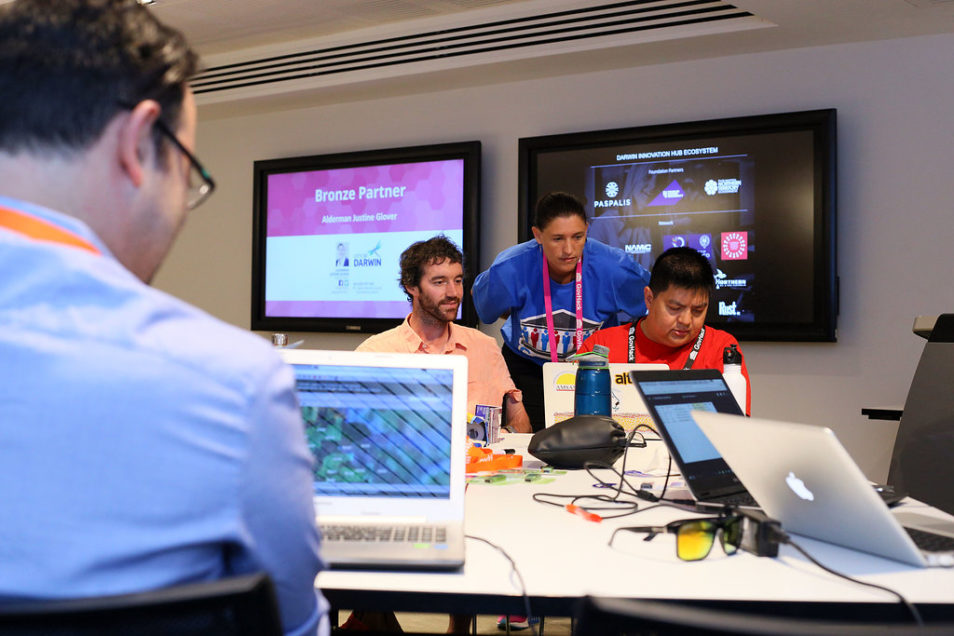
GovHack 2020 put data in the hands of Australia’s best hackers.
Hackers from Australia and New Zealand have virtually flocked to unravel data from Australia’s biggest government agencies – ours included.
But don’t worry, we asked them to! We willingly offered up our data to participants in this year’s GovHack competition. All in return for an innovative perspective on some interesting challenges.
Breaking ground at GovHack 2020
Formed to raise the profile of open government data, GovHack plays an important role in the tech world. It provides an opportunity to collaborate, gain knowledge and develop new skills. Also, it helps us identify and solve deep-rooted social, economic and environmental challenges.
This year, more than 1000 people attended a digital version of GovHack, with 691 keen hackers in their midst.
After the opening ceremony and announcement of challenges, teams formed and it was time to get hacking. They bunkered down for concept development and prototyping (in between fun activities to keep the creative juices flowing). At the end of the weekend, teams submitted a video outlining their project. Talk about hacking to a deadline!
As a national sponsor of GovHack this year, we didn’t just provide the data – we also set two of the challenges. And here’s how they went.
Challenge one: data-driven decisions for improved disaster planning, management or recovery
Australia is exposed to natural disasters on a regular basis and the associated costs are substantial. It’s been recognised that Australia needs systemic change in the way it deals with natural disasters. This was seen first-hand during the recent Black Summer bushfires, with a study estimating over 3.5 billion animals may have been impacted.
We need strategies to resist, absorb, accommodate, recover and transform in the face of natural disasters and climate change. This includes the effects of longer, drier summers, coupled with changes to the frequency and severity of cyclones, droughts and floods.
In this challenge, we asked our hackers to help communities contribute to information flows on natural disasters. Also, to provide decision-makers with tools to help make more informed decisions on natural disaster planning, management and response strategies.
The winner of challenge one was Fires – a new way. This app aims to provide communities with the ability to label high-value community assets on a real-time map. The app makes this information available to emergency response teams during a fire.
Challenge two: track and trace – help end plastic waste
Plastics are everywhere in our lives due to their cheap manufacture, light weight, and effectiveness as packaging solutions. However, as their use increases, plastic waste is becoming a huge threat to our environment and health. In particular, marine debris is a global environmental issue of increasing concern. In fact, our research has found that in Australia, three-quarters of coastline rubbish found is plastic and from Australian sources.
But plastic getting into the environment is often hard to track and understand. To look for patterns, scientists need relevant environmental data from communities to help improve our understanding of the types, amounts and sources of plastic that are polluting Australia.
In response to this challenge, we asked hackers to empower members of the community to report, measure and identify plastic waste in their environment. This will inform decision-makers and underpin policy and strategy to benefit all Australians.
The winners of this challenge were Project Clearwater. Their project explored an innovative way of using Internet of Things (IoT) devices to track plastic waste.
*Hacker voice* I’m in
These are just two of the incredible challenges our coding contingent tackled over the weekend. Why not explore the rest of the winning solutions.
Feeling inspired by GovHack 2020? Interested in taking part in a future GovHack event? Then keep an eye on their website for more information on upcoming events and competitions.


2nd November 2020 at 9:48 am
The bushfire ‘problem’ is an old one with a reliable old solution. An adult lifetime ago back in 1960 forest managers and rural firefighters had established a hazard redaction burning regime with an interval of about 15 years between HR burns. That discipline has largely disappeared and forest-floor fuel load has risen as the number of exposed properties in the bush has also risen.
Solution; back to the future and re-establish the 15-year HR routine with published targets and actuals fort each year.
But there is more. As you own admirable studies have shown green growth in 2020 is some 24% greater than in 1960 thanks to CO2 fertilisation. This a great boon for crop and timber production and for global greening generally – but it has its downside.
It means that each year there is 24% more leaf litter and other fine fuel dropped onto the forest floor. Even if the 1960 target of a 15-year burn rotation were achieved there would be 24% more fuel on the forest floor in 2020 than in 1960. This means that the fire-front travels 24% faster and its energy output per minute is 54% higher. In extreme conditions ember spot-over distance will be about 1 km further. This can turn a bad fire into a disastrous one.
The remedy? Reduce the HR rotation from 15 years to 12 years. That way the hazard level would return to that of 1960 with a 15-year interval. That hazard will not be zero, but it will be tolerable – especially given today’s much improved emergency management and firefighting methods.
So, on a State by State basis publish targets for the HR burn area to be achieved each year within the area of each Rural Fire Brigade. Base this on a 12-year rotation and publish the actuals at the end of each tear. Use Aboriginal burn methods wherever possible.